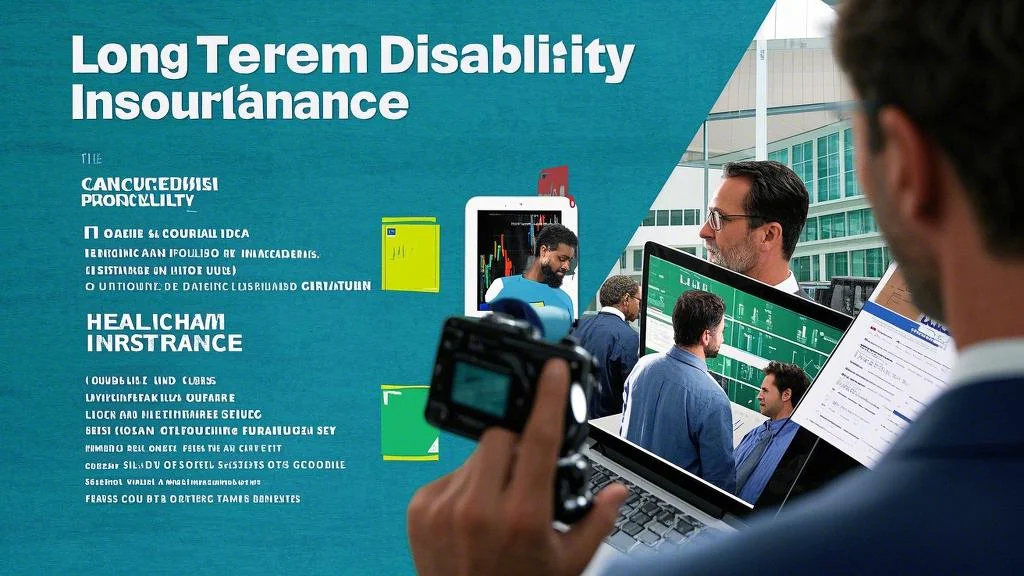The Importance of Long-Term Disability Insurance
When it comes to protecting your financial future, long-term disability insurance is one of the most overlooked yet essential tools. Many people assume that disabilities only result from accidents, but the reality is that illnesses like cancer, heart disease, and chronic conditions are far more likely to leave you unable to work. Without a steady income, your savings could quickly deplete, leaving you and your family in a precarious situation. Long-term disability insurance provides a safety net by replacing a portion of your income if you become unable to work due to a disability. This coverage ensures that you can continue to meet your financial obligations, such as mortgage payments, utility bills, and daily living expenses, even if you’re unable to earn a paycheck. By investing in long-term disability insurance, you’re not just protecting your income—you’re safeguarding your family’s future.
Disability Insurance vs Workers Compensation: What’s the Difference?
It’s important to understand the distinction between disability insurance vs workers compensation, as they serve different purposes. Workers compensation is designed to cover injuries or illnesses that occur directly as a result of your job. For example, if you suffer a back injury while lifting heavy equipment at work, workers compensation would cover your medical expenses and a portion of your lost wages. However, workers compensation does not cover disabilities that occur outside of work, such as a serious illness or an accident at home. This is where long-term disability insurance comes in. It provides coverage regardless of where or how the disability occurs, making it a more comprehensive solution for protecting your income. While workers compensation is mandatory for most employers to provide, disability insurance is typically optional, which is why many people overlook its importance. Understanding the differences between these two types of coverage can help you make informed decisions about your financial protection.
Critical Illness Insurance: A Complementary Safety Net
While long-term disability insurance focuses on replacing lost income, critical illness insurance provides a lump-sum payment if you’re diagnosed with a serious condition like cancer, stroke, or heart attack. This payment can be used to cover medical expenses, experimental treatments, or even everyday living costs. Critical illness insurance is particularly valuable because it offers immediate financial support during a time when you may face significant medical bills and reduced income. However, it’s not a substitute for disability insurance. Instead, it complements your existing coverage by addressing specific financial challenges that may arise from a critical illness. For example, if you’re diagnosed with cancer and need to take time off work, long-term disability insurance would replace your income, while critical illness insurance could help cover the cost of specialized treatments. Together, these policies provide a robust safety net that ensures you’re prepared for life’s unexpected challenges.

Accidental Death and Dismemberment Insurance: What You Need to Know
Another type of coverage to consider is accidental death and dismemberment insurance (AD&D). This policy provides a payout if you die or suffer a severe injury, such as the loss of a limb or eyesight, as a result of an accident. While AD&D insurance can provide financial support in the event of a tragic accident, it’s important to note that it doesn’t cover illnesses or non-accident-related disabilities. This makes it a more limited form of coverage compared to long-term disability insurance. However, AD&D insurance can be a valuable addition to your overall financial plan, especially if your job or lifestyle involves higher risks of accidents. For example, if you work in construction or frequently travel, AD&D insurance can offer peace of mind knowing that you and your family are protected in the event of an accident. When combined with other types of insurance, such as disability and critical illness coverage, AD&D insurance helps create a comprehensive safety net.
Health Savings Account (HSA) Benefits: A Financial Tool for the Future
In addition to insurance, a health savings account (HSA) can play a crucial role in your financial planning. HSAs are tax-advantaged accounts that allow you to save money for medical expenses. Contributions to an HSA are tax-deductible, and withdrawals for qualified medical expenses are tax-free. One of the key benefits of an HSA is that the funds roll over year after year, making it a powerful tool for saving for future healthcare needs. If you have a high-deductible health plan, pairing it with an HSA can help you manage out-of-pocket medical costs while saving for the future. Additionally, HSAs can be used to pay for a wide range of medical expenses, including premiums for long-term disability insurance in some cases. By leveraging the health savings account (HSA) benefits, you can create a financial cushion that complements your insurance coverage and provides added security for you and your family.
How to Choose the Right Disability Insurance Policy
Selecting the right long-term disability insurance policy requires careful consideration of your needs and financial situation. Start by evaluating how much coverage you need. A good rule of thumb is to choose a policy that replaces 60-70% of your income. Next, consider the waiting period, which is the time between when you become disabled and when benefits begin. A shorter waiting period means you’ll receive benefits sooner, but it may also result in higher premiums. Additionally, review the policy’s definition of disability, as some policies only pay benefits if you’re unable to work in any occupation, while others pay if you’re unable to work in your specific occupation. Finally, compare policies from multiple insurers to find the best rates and terms. By taking the time to research and compare, you can find a policy that provides the protection you need at a price you can afford.
Common Mistakes to Avoid When Buying Disability Insurance
When purchasing long-term disability insurance, it’s easy to make mistakes that can leave you underinsured or paying more than necessary. One common error is underestimating the amount of coverage you need, which can leave you struggling to cover expenses if you become disabled. Another mistake is overlooking the importance of the policy’s definition of disability, which can significantly impact your ability to receive benefits. Additionally, some people assume that employer-provided disability insurance is sufficient, but these policies often provide limited coverage and may not be portable if you change jobs. To avoid these pitfalls, take the time to thoroughly research your options and consult with a financial advisor or insurance professional. By making an informed decision, you can ensure that you and your family are adequately protected.
Conclusion
Protecting your income with long-term disability insurance is one of the most important steps you can take to secure your financial future. While it’s easy to overlook this type of coverage, the reality is that disabilities can happen to anyone, and the financial consequences can be devastating. By understanding the differences between disability insurance vs workers compensation, exploring complementary options like critical illness insurance and accidental death and dismemberment insurance, and leveraging tools like a health savings account (HSA), you can create a comprehensive safety net that protects you and your family from life’s uncertainties. Don’t wait until it’s too late—take the time to evaluate your needs and invest in the coverage that provides peace of mind and financial security.


